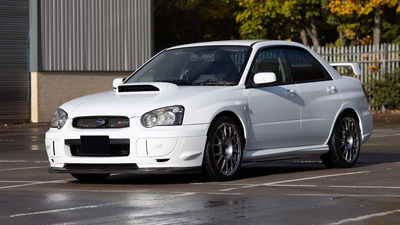Disastrous Defense – 1998 Williams FW20 Mecachrome
1997 was an easy cruise to victory for British constructor Williams Grand Prix Engineering. Hiring top title-contending drivers that year with 1995 CART champion, Jacques Villeneuve (CAN).

1997 was an easy cruise to victory for British constructor Williams Grand Prix Engineering. Hiring top title-contending drivers that year with 1995 CART champion, Jacques Villeneuve (CAN). Teaming up with him is Heinz Harald Frentzen (GER), who in the few previous seasons impressed a lot of eyes with his performance at Swiss team Sauber.
Frentzen’s arrival wasn’t without disappointment from other parties, however. The party in question was no other than the champion of the previous year, Damon Hill. Hill was dropped from Williams to make way for Frentzen’s signing to the team. Hill then reluctantly signed with midfield team Arrows Grand Prix International.
1997

For Williams, 1997 was the season of everyone’s dreams. Their car, the FW19 performed amazingly, regularly finishing in the podium. Frank Williams’ empire was also something that other teams are really jealous of. They have Sir Patrick Head, a very intelligent engineer as their Technical Director. Adrian Newey OBE, a man very respected in the world of aerodynamics, as their main aerodynamicist. Newey had previously designed Williams’ championship-winning cars like Nigel Mansell and Riccardo Patrese’s FW14, the very technological FW15 of Alain Prost and Damon Hill, and the previous year’s championship winning car of Damon Hill and Jacques Villeneuve, the FW18.
Along with great brains in the office, Williams also has one of the best partners. Their main sponsor, British American Tobacco’s (BAT) Rothmans International, provided vast amount of budget for the team. And of course, what is a car without an engine? Williams has one of the most successful engines in the 1990s. The engines in question is no other than the RS V10 engines from Renault. Renault’s RS V10s powered the cars that won the 1992 (FW14), 1993 (FW15), 1995 (B195), 1996 (FW18), and 1997 (FW19).
With all that in their sleeves, their only real threat was no other than Jean Todt’s Scuderia Ferrari and their top driver, Michael Schumacher. Villeneuve, Frentzen, and Schumacher were the ones to beat in the 1997 season, and with fans treated to an exciting and controversial season finisher in Jerez.
1998

Williams’ expectation curtailed for 1998. They (along with fellow Renault engine user, Benetton) lost Renault’s top performing RS engines as the French manufacturer pulled out of the series at the end of the previous season. Williams and Benetton then, were on a deep hunt. Their search for a new supplier came with none, however. So, what they did was they used the 1997-spec Renault engines badged as Mechachrome. Benetton would rebadge their engines as Playlife engines.
This already sounds like a very desperate attempt to stay in the league for 1998, doesn’t it?
Well, to make matters worse, Williams lost yet another key to their previous success and that is Chief Aerodynamicist Adrian Newey to rival British team McLaren. In Newey’s place at Williams is not one, but two people, Geoff Willis and Gavin Fisher.
Also changed was the blue and white Rothmans livery. In its place is fellow BAT cigarette product, Winfield and its red, gold, and white colors.
The 1998 challenger, dubbed the FW20, was the first car since the FW13 in 1991 to not bear Adrian Newey’s inputs on the design. Fisher, Willis, and Head however, didn’t really changed much of the design from the FW19, leaving some to comment, supported with the use of last year’s Renault engines, the FW20 was an FW19 adapted with 1998 regulations.
We are eager to see how the competition has adopted the changes [the new 1998 regulation changes]. I would not say that we have any massive secrets in the FW20. We have a very sound and good base on which to build throughout the year ahead. There is nothing radical about the suspension. We have new suspension geometries but there are no new composite bits and pieces. The uprights are new, so is the cooling system, the diffuser and the wing profiles. The gearbox is still a transverse unit but it is also new, although it has the same basic layout as the one we used last year. There are lots of new details and I must say it looks to be a very promising unit. Lots of people seem to want to change to longitudinal gearboxes but I doubt that having a longitudinal gearbox rather than a transverse one is going to be a race-winning factor. We have seen that last year with transverse gearboxes winning 16 of 17 races.
Sir Patrick Head, FW20 launch

During shakedowns at Silverstone, reigning champion Villeneuve stated that he was very much happy with the car and was looking forward to drive it in the coming season. However, shakedowns are shakedowns and do not represent the car’s actual performance.
During the testing at Barcelona, it was clear that Newey and Renault’s departure had taken its toll on the performance of the new car. The FW20 was not a season dominator but it was not a back marker car. Think the FW20 as today’s equivalent of the Force Indias.
At the season opener at Melbourne, the two qualified a respectable 4th (VIL) and 6th (FRE) places. The opening laps was a treat for Villeneuve as Michael Schumacher’s engine expired, giving 3rd position to him. Before the first pit stops however, Villeneuve caught traffic and made worse with pressure from Benetton’s Giancarlo Fisichella, making the two of them lose momentum and made Frentzen passed.
Frentzen then carried on in his third place and Villeneuve finishing 5th.
The next round at Brazil however, was not as good. Frentzen and Villeneuve finishing a mediocre 5th and 7th respectively, with Frentzen bagging up 2 points.
Argentina? It got even worse. Villeneuve was in a battle with David Coulthard in his McLaren MP4/13 throughout the whole race, until the two tangled together and sending Villeneuve out of the race with 20 laps to go. Frentzen, meanwhile, had no such problems, coming home in 9th place, scoring no points.
Spain and San Marino were another mediocre races with Villeneuve and Frentzen scoring in both occasions.
Monaco wasn’t such a good story for Frentzen as the German collided with Eddie Irvine. While Frentzen had to retire from the race, Irvine continued and finished an impressive third place. Jacq meanwhile finished a relatively calm 5th position.

At Villeneuve’s home race, the pair qualified P6 and P7 with Villeneuve just edges out Frentzen by 0.174 seconds. Frentzen however, would have to retire from the race after spinning into the gravel trap. And at his home race, Villeneuve couldn’t do his home fans proud as he could only manage to finish in tenth place.
The following 3 Grands Prix, Britain, France, and Austria went by mediocrely again for the Canadian as he finished scoring 4 points in those 3 rounds. Frentzen meanwhile, had to finish outside the points in France, while retiring in England and Austria due to an incident and a failure respectively.
But, all of this is going to be a moment of joy for the team as Jacques Villeneuve equalled Heinz Harald Frentzen’s season best of 3rd place at the German and Hungarian Grands Prix. Villeneuve got third by a strategy advantaged as he overfilled his car at the start and lasting longer than others. Villeneuve was actually catching the fuel-saving David Coulthard at the end and finished 0.509 seconds behind Coulthard.
Hungary was a straightforward race for them, with Villeneuve bringing home a consecutive podium finish.
But, Belgian and Italian Grands Prix were retirements for Villeneuve. At Spa, he spun off under the extremely wet conditions. For Frentzen, who didn’t have the greatest of races in the last few weeks, he finished 4th in the chaotic Belgian Grand Prix.
In Italy, Villeneuve ran with a luck pushing setup for the weekend. He set the car up to have as much downforce as a Boeing 787 (in other words, an airliner has more downforce than his setup) . This was done to compensate for the lacking of power in the Mechacrome engine. The setup proved to be a very good one with Flight First Officer Villeneuve in his Boeing qualifying a very impressive 2nd, just 0.272 seconds slower than pole sitter Michael Schumacher. The race didn’t go as smoothly as qualifying as Villeneuve’s eventually and inevitably spin out.
See kids? You need downforce even at tracks like Monza.
Frentzen didn’t set his downforce like a Boeing but he could only manage 7th.

The following Grands Prix (Luxembourg and season closer Japanese) finished rather mediocrely. Again.
At the end of the season, defending champion Jacques Villeneuve, with 21 points, managed to finish in 5th place in the Championship, a 79 point deficit champion Mika Hakkinen. Defending Constructors’ Champion Williams Grand Prix Engineering finished 3rd in the Championship, a 118 points less than McLaren, with just 38 points.
The FW20 was a beginning of an end to the dominant era of Williams. The closest they have ever been to winning a championship since 1997 was in 2003 with Juan Pablo Montoya. He eventually was unfortunately out of contention due to reliability issues.
#blogpost














Comments
Extremely Awesome post! Needs to be an editor’s pick!!
Great post!
KyleAshdown you know exactly what to do
Hey, nice title style. Almost reminds me of someone…
Yep, thought so too